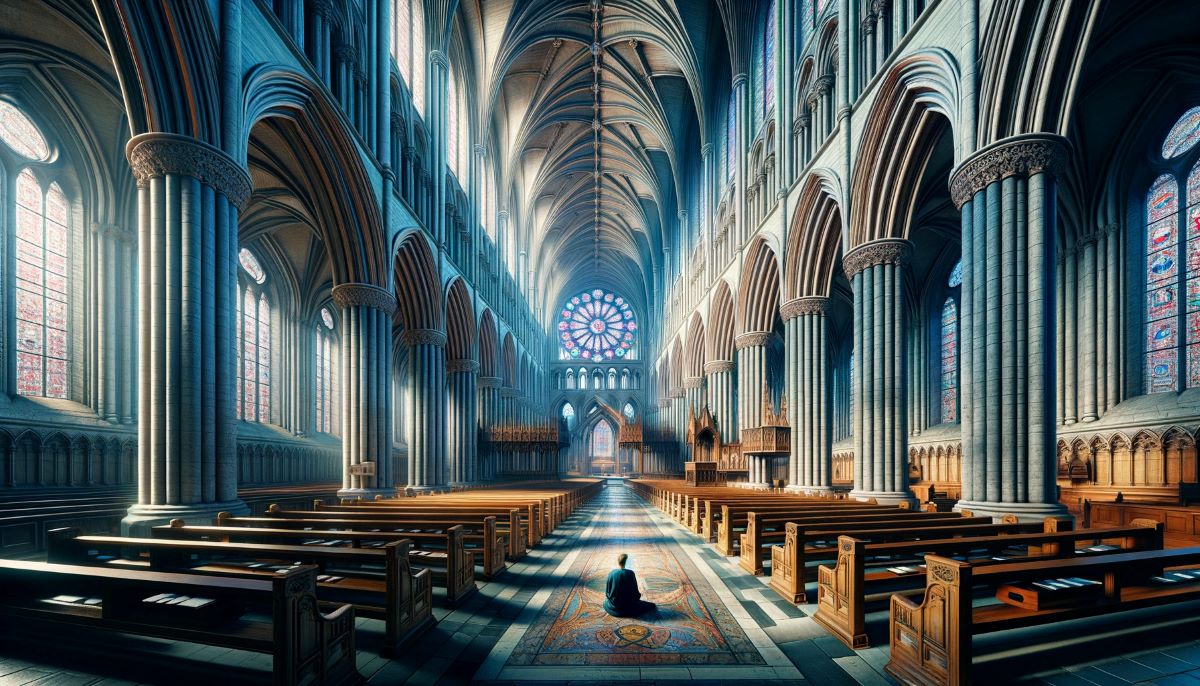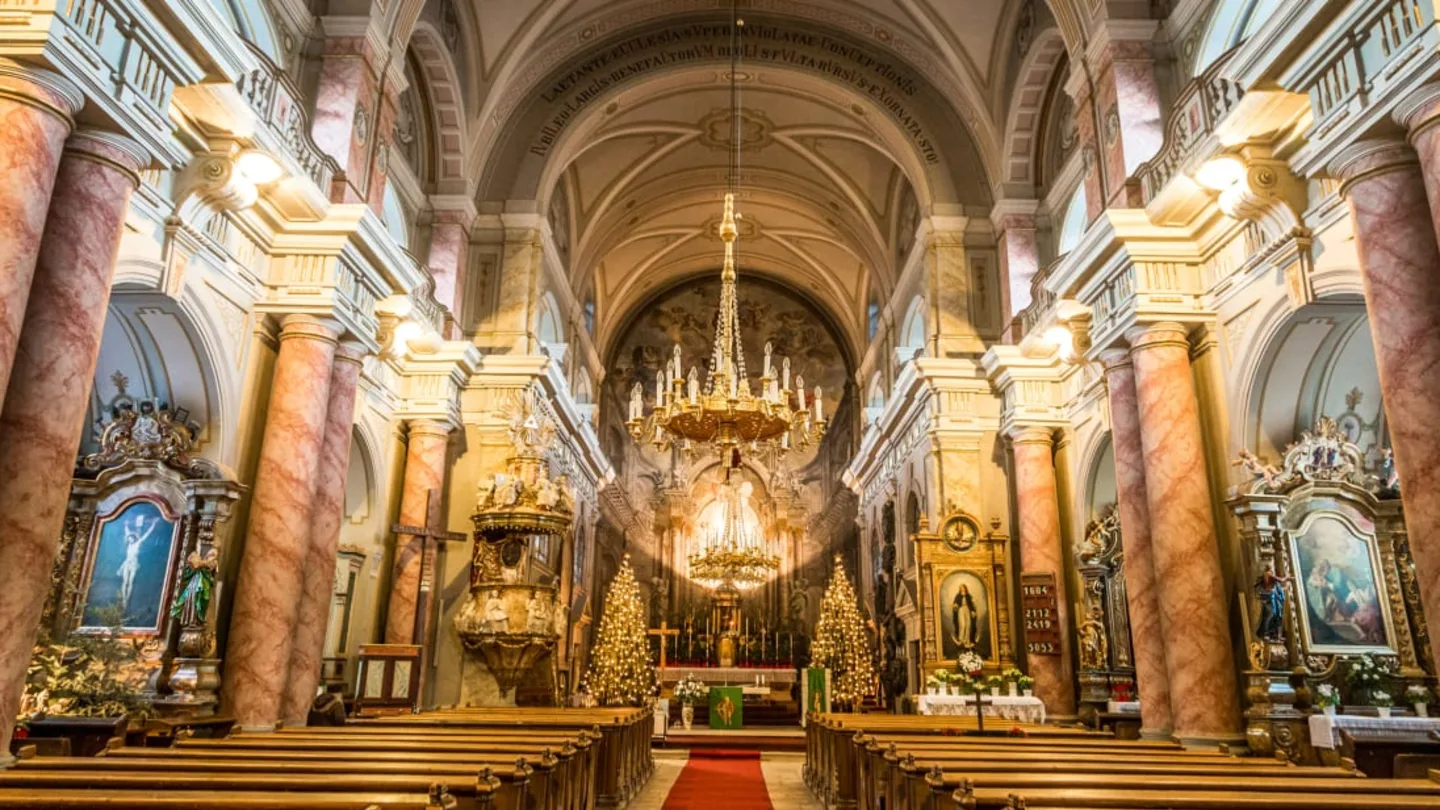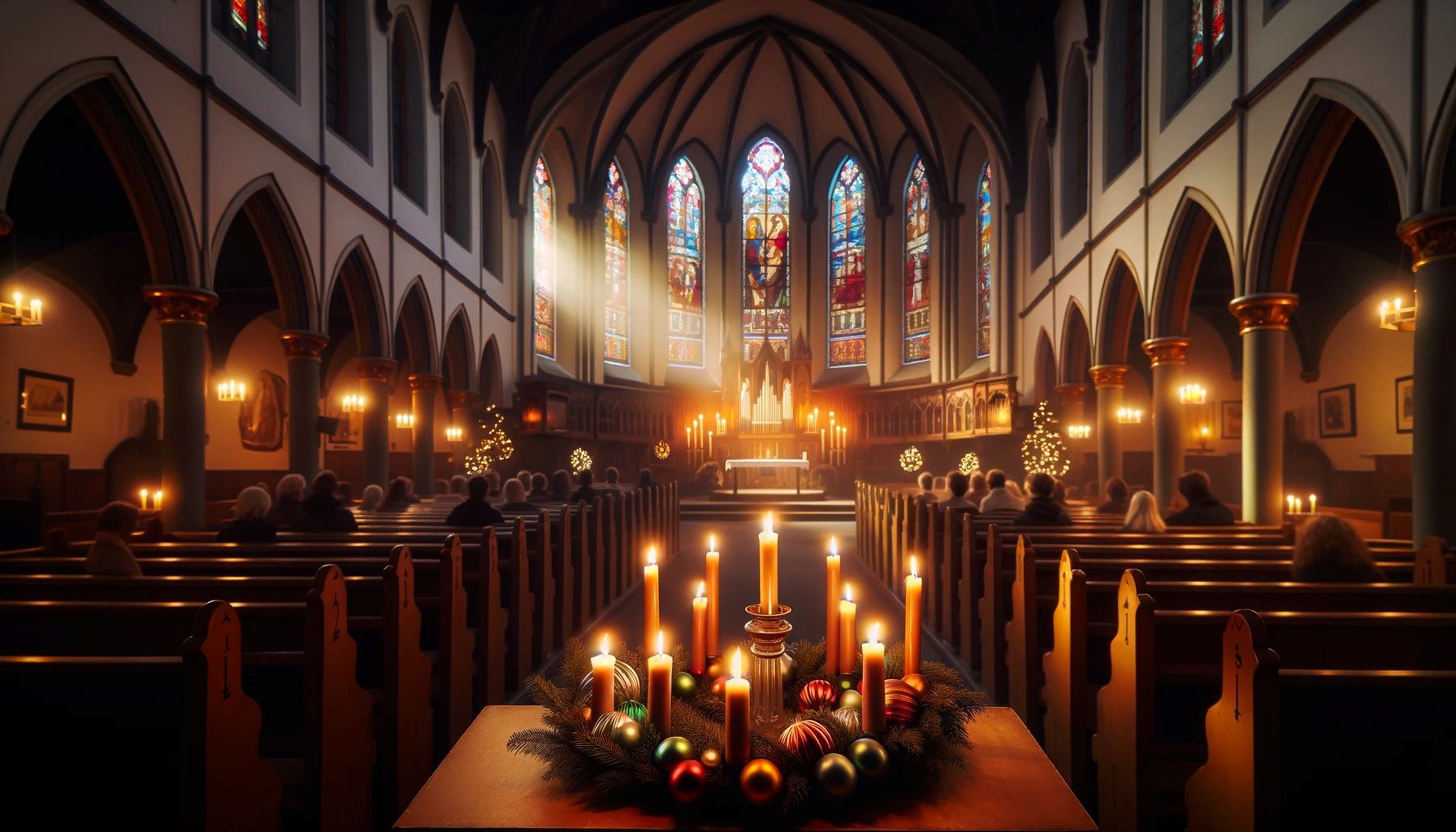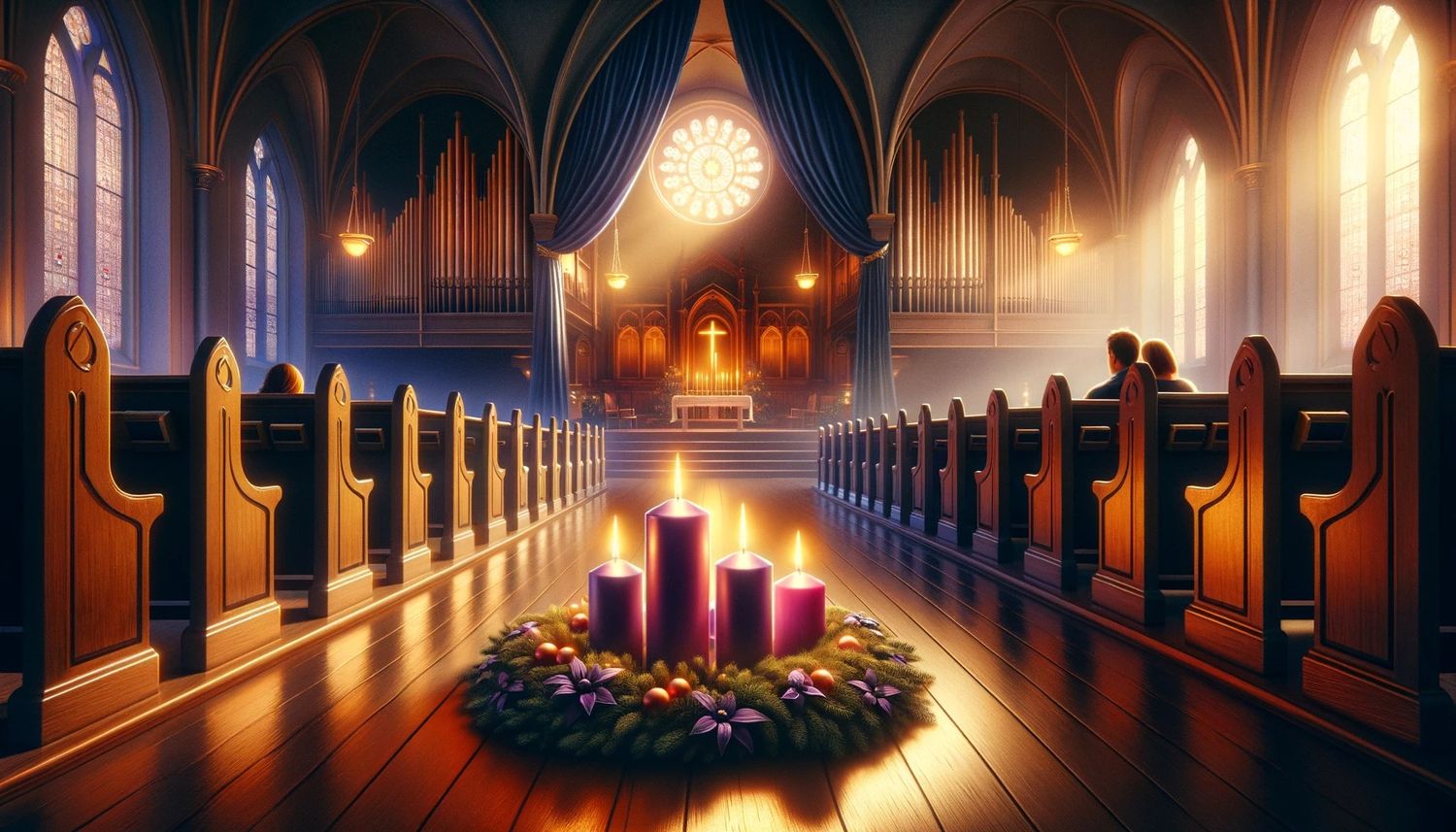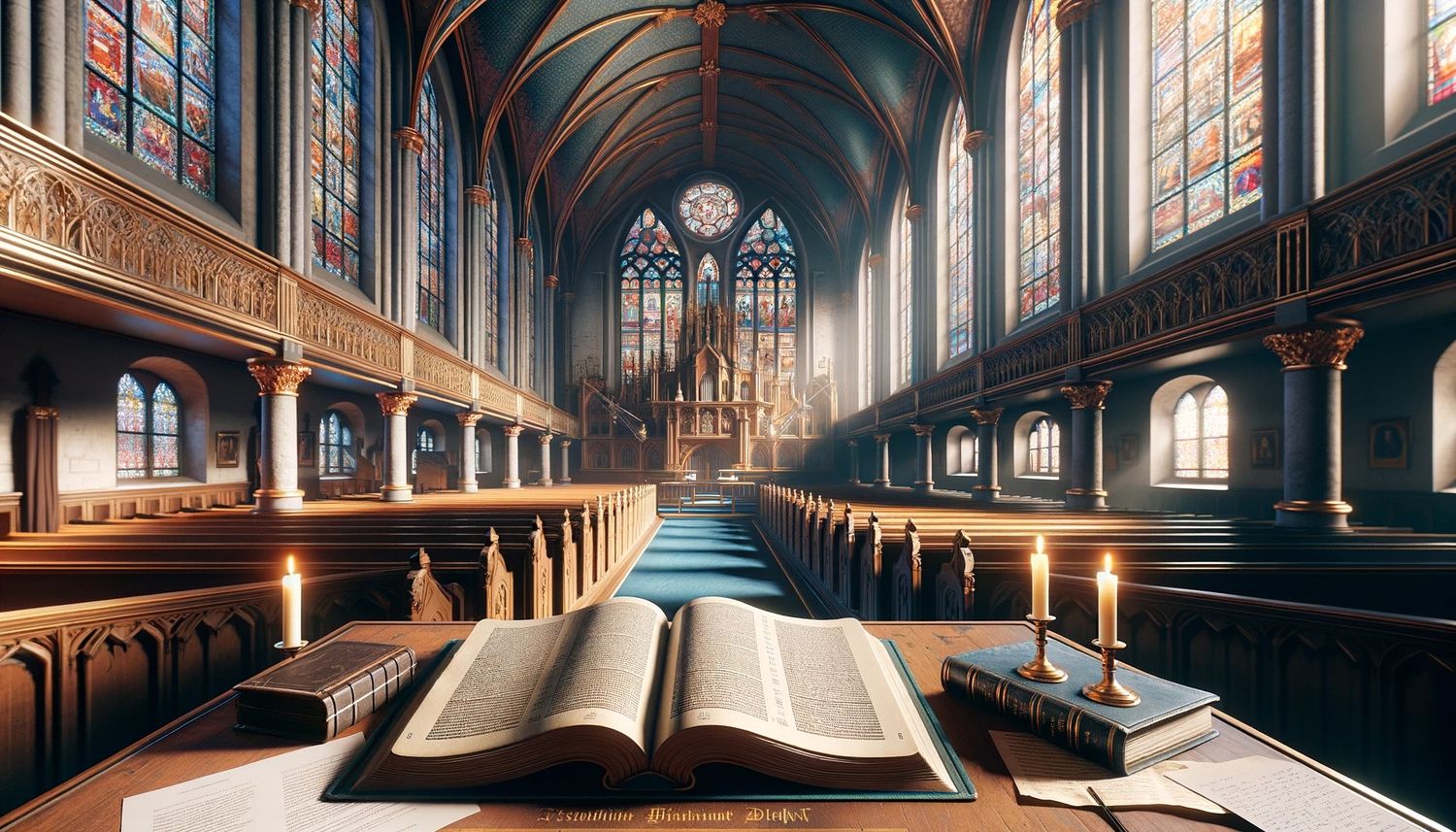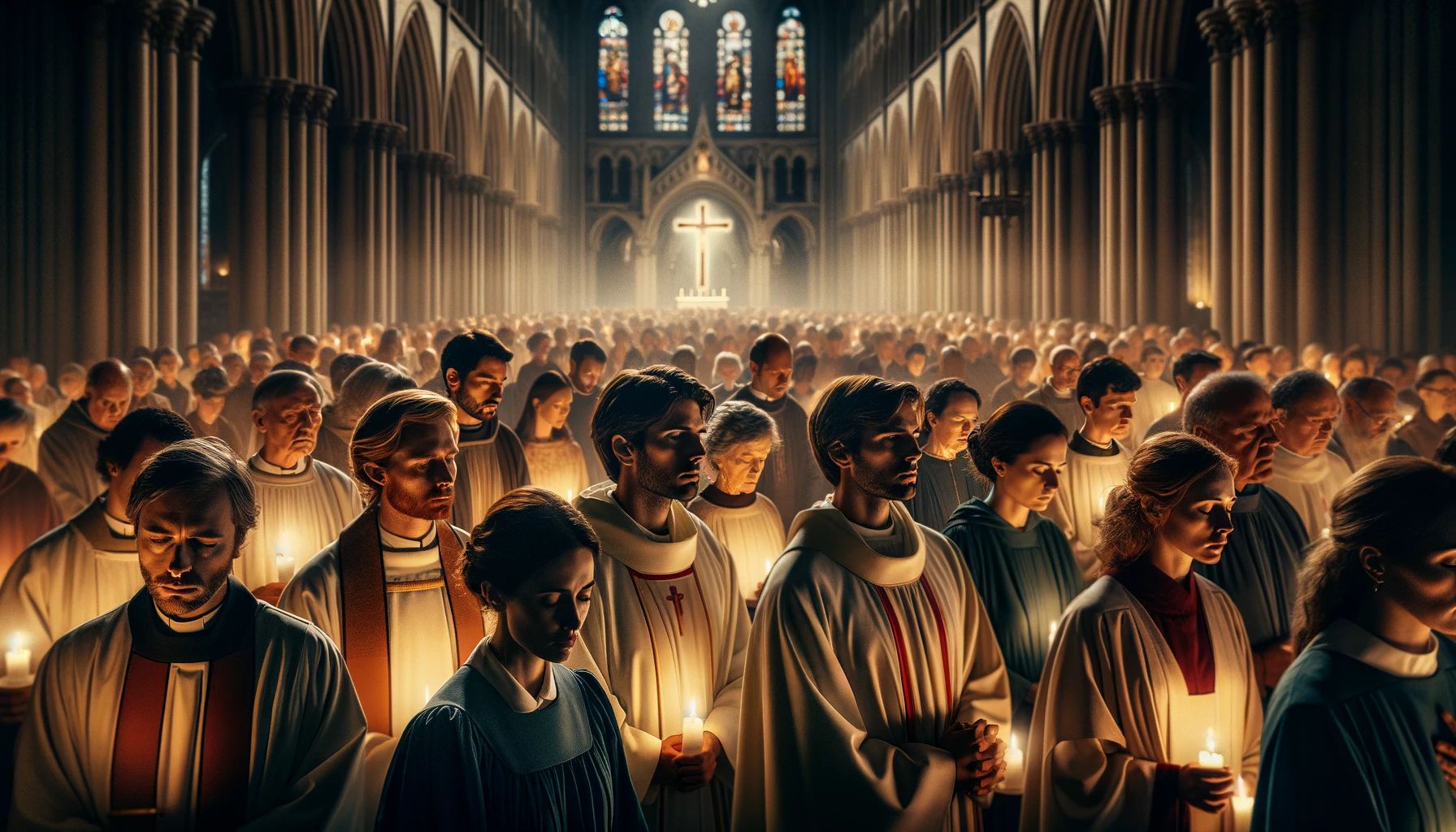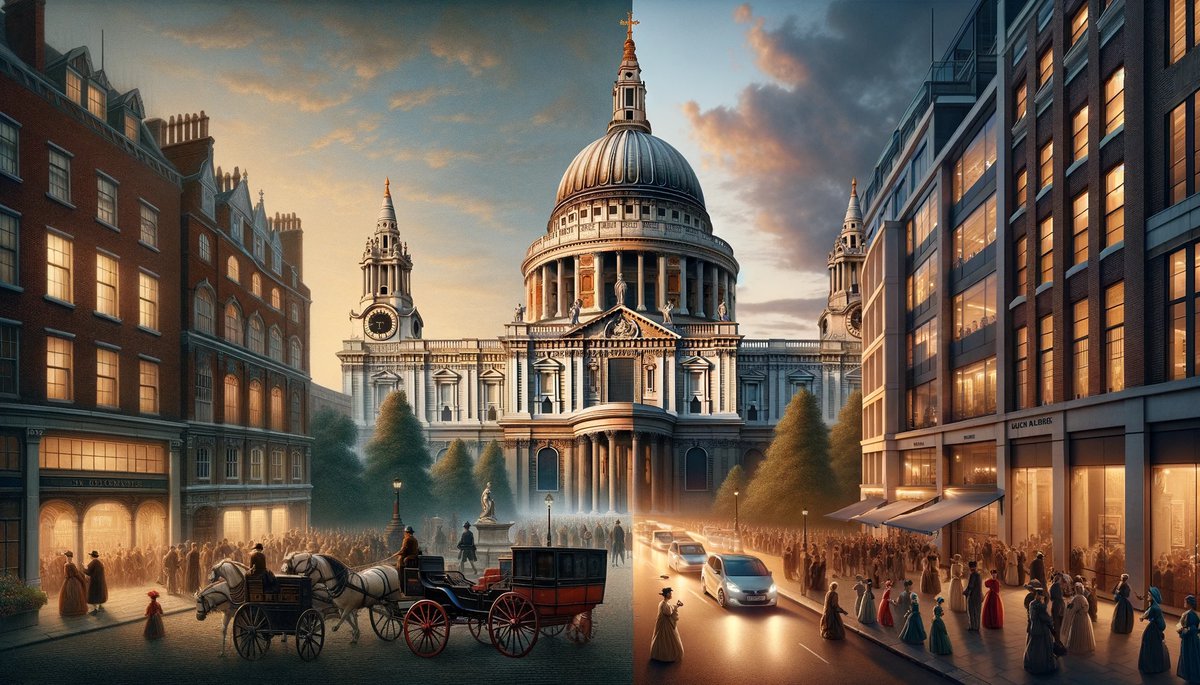Home>Arts and Culture>What Is A Cathedral Church
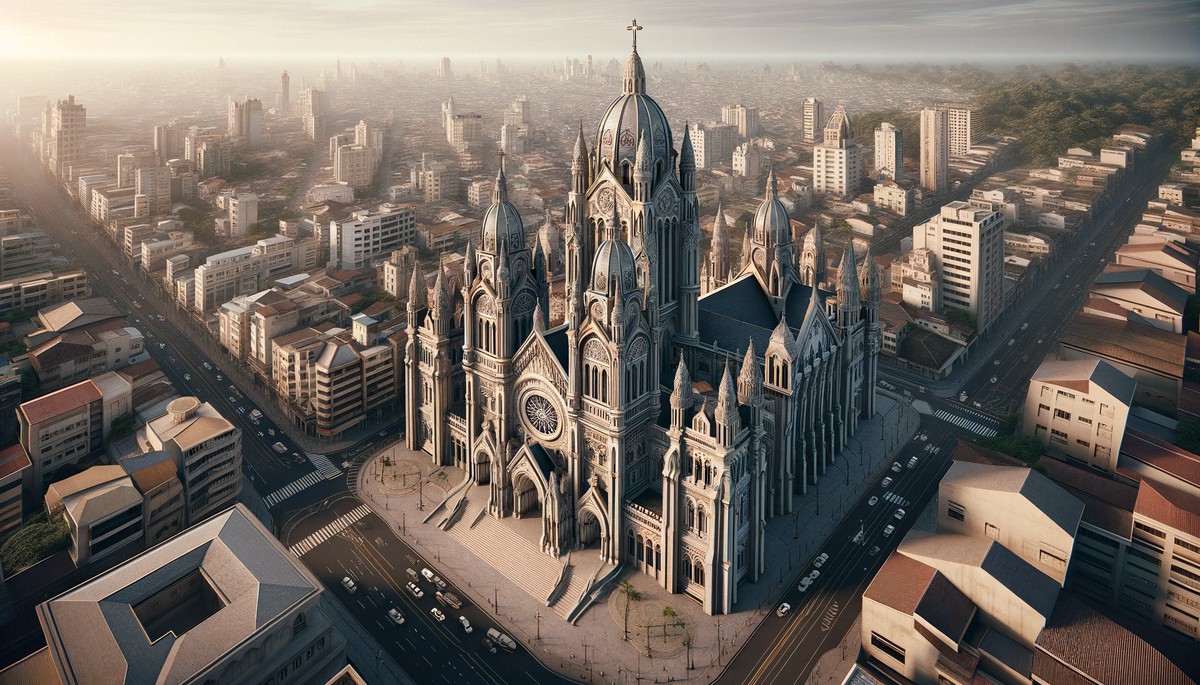

Arts and Culture
What Is A Cathedral Church
Published: February 15, 2024
Ericka Andersen, an editor at Christian.net, expertly merges digital strategy with content creation, focusing on faith and societal issues. Her communication skills enhance the platform's engaging narratives, fostering meaningful dialogue on belief's impact on society.
Discover the significance of cathedral churches in the realm of arts and culture. Learn about their architectural marvels and historical importance. Explore the beauty and heritage of cathedral churches.
(Many of the links in this article redirect to a specific reviewed product. Your purchase of these products through affiliate links helps to generate commission for Christian.net, at no extra cost. Learn more)
Table of Contents
Introduction
Cathedral churches stand as majestic symbols of human creativity and spiritual devotion, embodying centuries of history, art, and faith. These awe-inspiring structures have captivated the hearts and minds of people across the globe, serving as both religious sanctuaries and architectural marvels. From the towering spires that seem to touch the heavens to the intricate stained glass windows that bathe the interiors in a kaleidoscope of colors, cathedral churches are a testament to the ingenuity and devotion of countless artisans and worshippers.
As we embark on a journey to explore the world of cathedral churches, we will delve into the very essence of these sacred edifices, uncovering the profound significance they hold for communities and individuals alike. Through this exploration, we will gain a deeper understanding of the historical, cultural, and spiritual dimensions that make cathedral churches such integral parts of our collective heritage.
Join me as we unravel the mysteries and magnificence of cathedral churches, tracing their evolution from humble beginnings to towering masterpieces that continue to inspire wonder and reverence. Let us embark on a voyage through time and space, where the echoes of ancient chants and the whispers of timeless prayers still resonate within the hallowed walls of these extraordinary monuments.
Read more: What Is A Co-Cathedral Church
Definition of a Cathedral Church
A cathedral church, often simply referred to as a cathedral, is a place of worship that serves as the central hub of a diocese, housing the bishop's official seat or cathedra. This distinguishes it from other churches and places of worship, as it holds a position of authority and spiritual significance within the hierarchical structure of the Catholic, Eastern Orthodox, and Anglican traditions. The term "cathedral" is derived from the Latin word "cathedra," which translates to "seat" or "throne," symbolizing the bishop's role as the spiritual leader and overseer of the diocese.
Cathedral churches are characterized by their grandeur and architectural splendor, often featuring soaring spires, ornate facades, and expansive interiors adorned with intricate artwork and sacred relics. These magnificent structures are not only places of communal worship but also serve as living testaments to the artistic and engineering prowess of the eras in which they were constructed.
In addition to their religious significance, cathedral churches hold a special place in the hearts of believers and non-believers alike, drawing visitors from far and wide to marvel at their beauty and experience the profound sense of awe and tranquility that permeates their sacred spaces. Whether it's the ethereal glow of sunlight filtering through stained glass windows or the hauntingly beautiful melodies of choral music reverberating through the halls, cathedral churches offer a transcendent experience that transcends religious affiliations.
Furthermore, cathedral churches often serve as focal points for community gatherings, cultural events, and charitable activities, fostering a sense of unity and shared purpose among the faithful and the broader public. Their doors are open to all, welcoming individuals seeking solace, inspiration, or simply a moment of respite from the hustle and bustle of daily life.
As we continue our exploration of cathedral churches, we will delve deeper into their historical significance, architectural marvels, and enduring impact on the communities they serve. Join me as we embark on a captivating journey through the heart and soul of these extraordinary edifices, where the echoes of centuries past still resonate with timeless wisdom and grace.
History of Cathedral Churches
The history of cathedral churches is a tapestry woven with the threads of faith, power, and human ingenuity. It unfolds across centuries, spanning diverse cultures and civilizations, each contributing to the rich tapestry of architectural and spiritual heritage that defines these sacred edifices.
The origins of cathedral churches can be traced back to the early centuries of Christianity, when clandestine gatherings of believers took place in private homes and secluded catacombs. As the influence of Christianity grew, these humble meeting places evolved into more elaborate structures, reflecting the burgeoning faith of their congregations. The concept of a central church, serving as the seat of a bishop and a focal point for religious authority, began to take shape during this formative period.
One of the earliest examples of a cathedral church is the Basilica of San Giovanni in Laterano in Rome, consecrated in the 4th century. This venerable structure, with its imposing facade and grand interior, stands as a testament to the enduring legacy of early Christian architecture and the pivotal role of the bishop as a spiritual leader within the community.
The medieval era witnessed a flourishing of cathedral construction across Europe, as the power and influence of the Church reached its zenith. Magnificent cathedrals, such as Notre-Dame de Paris and Chartres Cathedral in France, and Canterbury Cathedral in England, emerged as towering symbols of religious devotion and architectural prowess. These monumental structures, with their soaring spires and intricate stone carvings, served as beacons of faith and centers of learning, attracting pilgrims and scholars from far and wide.
The Renaissance period ushered in a new chapter in the history of cathedral churches, marked by a revival of classical architectural principles and a renewed emphasis on artistic expression. This era gave rise to masterpieces such as St. Peter's Basilica in Vatican City, a crowning achievement of Renaissance architecture and a testament to the enduring legacy of cathedral construction.
The evolution of cathedral churches continues to unfold in the modern era, with contemporary architects and artisans drawing inspiration from centuries-old traditions while embracing innovative design and construction techniques. Today, cathedral churches stand as living monuments to the enduring spirit of human creativity and spiritual devotion, inviting visitors to embark on a journey through time and faith.
As we reflect on the history of cathedral churches, we are reminded of the indelible imprint they have left on the cultural, artistic, and spiritual landscapes of the world. Their stories are intertwined with the narratives of civilizations, the ebb and flow of history, and the enduring quest for transcendence and meaning. In the hallowed halls of these magnificent edifices, the echoes of centuries past continue to resonate, bearing witness to the enduring power of human aspiration and the timeless allure of the divine.
Architecture of Cathedral Churches
The architecture of cathedral churches is a testament to the ingenuity, craftsmanship, and spiritual aspirations of the societies that conceived and constructed these monumental edifices. From the soaring spires that seem to reach for the heavens to the intricate details adorning their facades and interiors, cathedral churches stand as enduring masterpieces of architectural achievement.
One of the defining features of cathedral architecture is its verticality, symbolizing the human aspiration to transcend the earthly realm and connect with the divine. This is exemplified by the towering spires and steeples that adorn many cathedral churches, reaching skyward in a testament to the lofty aspirations of the faithful. These vertical elements not only serve as striking visual symbols but also draw the eyes and hearts of worshippers heavenward, inspiring a sense of awe and reverence.
The interiors of cathedral churches are often characterized by expansive, open spaces that evoke a sense of grandeur and transcendence. High vaulted ceilings, supported by graceful arches and sturdy columns, create an atmosphere of ethereal beauty and spiritual upliftment. The play of light and shadow within these cavernous interiors, filtered through stained glass windows and illuminating sacred artworks, adds to the otherworldly ambiance that permeates these hallowed spaces.
The facades of cathedral churches are often adorned with intricate carvings, sculptures, and decorative elements that reflect the artistic and cultural sensibilities of the eras in which they were constructed. From the elaborate rose windows that adorn the fronts of Gothic cathedrals to the ornate reliefs depicting biblical scenes and saints, these exterior embellishments serve as visual narratives of faith and devotion, inviting visitors to contemplate the stories and symbols they convey.
Stained glass windows, another hallmark of cathedral architecture, infuse the interiors with a kaleidoscope of color and light, bathing the sacred spaces in a transcendent glow. These exquisite works of art depict scenes from religious texts and traditions, serving as visual aids for conveying spiritual teachings and inspiring contemplation and meditation.
The architectural splendor of cathedral churches extends beyond their physical structures to encompass the sacred artifacts and relics they enshrine. From ornate altars and intricately carved choir stalls to priceless works of religious art and artifacts, cathedral churches serve as repositories of cultural and spiritual treasures, preserving the legacy of faith and creativity for future generations to behold.
In essence, the architecture of cathedral churches is a harmonious fusion of artistic expression, spiritual symbolism, and technical mastery, weaving together the aspirations and inspirations of countless generations into a timeless tapestry of human achievement. These awe-inspiring structures continue to stand as living testaments to the enduring power of faith, art, and the human spirit, inviting all who enter their sacred precincts to embark on a journey of wonder, contemplation, and transcendence.
Role of Cathedral Churches in the Community
Cathedral churches play multifaceted roles within their communities, extending far beyond their religious functions. These monumental edifices serve as cultural landmarks, centers of education, hubs of charitable activities, and symbols of unity and solidarity. Their impact reverberates through the social fabric, enriching the lives of individuals and fostering a sense of belonging and shared purpose.
At the heart of their community role, cathedral churches serve as gathering places for people from all walks of life. They provide a sanctuary for quiet reflection, spiritual solace, and communal worship, offering a respite from the frenetic pace of modern life. The open doors of cathedral churches welcome individuals seeking moments of tranquility, inspiration, or simply a space for contemplation, transcending religious affiliations to embrace all who seek solace within their sacred precincts.
Furthermore, cathedral churches often serve as venues for cultural events, musical performances, and art exhibitions, enriching the cultural tapestry of their communities. From choral concerts that resonate through their lofty halls to exhibitions of religious art and historical artifacts, these sacred spaces become vibrant centers of artistic expression and cultural exchange, fostering a deeper appreciation for the arts and humanities.
In addition to their cultural contributions, cathedral churches are beacons of charitable outreach and community service. They often host food drives, clothing donations, and outreach programs aimed at supporting the less fortunate and marginalized members of society. Through these initiatives, cathedral churches embody the spirit of compassion and solidarity, mobilizing their congregations and community members to extend a helping hand to those in need.
Education also finds a place within the hallowed walls of cathedral churches, as they serve as repositories of knowledge and historical insight. Many cathedrals house libraries, archives, and educational programs that offer valuable resources for scholars, students, and history enthusiasts. These initiatives contribute to the preservation and dissemination of cultural heritage, fostering a deeper understanding of the historical, artistic, and spiritual dimensions embodied within these sacred spaces.
Ultimately, the role of cathedral churches in the community transcends the boundaries of religious affiliation, embracing individuals from all walks of life and enriching the social, cultural, and spiritual tapestry of their surroundings. Their enduring presence serves as a testament to the unifying power of faith, art, and compassion, weaving together the diverse threads of community life into a vibrant and harmonious tapestry.
Read more: What Makes A Church A Cathedral
Famous Cathedral Churches around the World
The world is adorned with a myriad of cathedral churches, each bearing its own unique history, architectural splendor, and spiritual significance. These monumental edifices stand as testaments to the enduring legacy of human creativity and devotion, drawing pilgrims, scholars, and art enthusiasts from across the globe. Let us embark on a captivating journey to explore some of the most renowned cathedral churches that grace the landscapes of different continents, each weaving its own narrative of faith, art, and cultural heritage.
1. Notre-Dame Cathedral, Paris, France
Notre-Dame Cathedral, with its iconic flying buttresses and majestic rose windows, stands as a timeless masterpiece of French Gothic architecture. Its imposing facade and ethereal interior have inspired countless artists and writers, capturing the imagination of visitors with its awe-inspiring beauty and historical significance.
2. St. Peter's Basilica, Vatican City
As the centerpiece of the Catholic faith and a crowning achievement of Renaissance architecture, St. Peter's Basilica exudes grandeur and spiritual magnificence. The vast dome designed by Michelangelo and the breathtaking Pietà by the master sculptor himself are just a few of the treasures that adorn this sacred space.
3. Canterbury Cathedral, England
A UNESCO World Heritage Site, Canterbury Cathedral holds a place of honor in English history and religious tradition. Its stunning stained glass windows, medieval crypt, and the shrine of Thomas Becket draw visitors seeking to immerse themselves in the rich tapestry of British ecclesiastical heritage.
4. Sagrada Família, Barcelona, Spain
Antoni Gaudí's visionary masterpiece, the Sagrada Família, is a testament to the marriage of art and spirituality. Its organic forms and intricate details, coupled with the interplay of light and color within its interior, create an otherworldly ambiance that captivates all who enter its sacred precincts.
5. Cologne Cathedral, Germany
The Cologne Cathedral, a towering example of High Gothic architecture, commands attention with its twin spires and imposing presence along the Rhine River. Its awe-inspiring interior, adorned with medieval sculptures and the Shrine of the Three Kings, offers a glimpse into the spiritual and artistic heritage of Germany.
6. St. Basil's Cathedral, Moscow, Russia
A symbol of Russian identity and religious fervor, St. Basil's Cathedral dazzles with its vibrant colors and whimsical onion domes. Its unconventional design and rich history make it a must-see for those seeking to unravel the enigmatic allure of Russian religious architecture.
7. Chartres Cathedral, France
Chartres Cathedral, renowned for its labyrinthine floor pattern and exquisite stained glass windows, stands as a pinnacle of French Gothic artistry. Its celestial blue hues and intricate iconography transport visitors to a realm of transcendent beauty and spiritual contemplation.
These cathedral churches, among many others scattered across the continents, stand as living testaments to the enduring power of faith, art, and human aspiration. Each bears the indelible imprint of the cultures and civilizations that gave rise to them, inviting visitors to embark on a journey through time and transcendence within their sacred precincts.
Conclusion
In conclusion, cathedral churches stand as timeless embodiments of human creativity, spiritual devotion, and cultural heritage. From their humble origins in the early centuries of Christianity to their evolution into towering masterpieces of architectural achievement, these sacred edifices have woven themselves into the fabric of human history, leaving an indelible mark on the landscapes of faith, art, and community life.
The journey through the world of cathedral churches has unveiled the profound significance they hold for individuals and communities across the globe. These monumental structures transcend their religious functions, serving as beacons of cultural enrichment, charitable outreach, and educational enlightenment. Their open doors welcome all who seek solace, inspiration, or a moment of respite, fostering a sense of unity and shared purpose among diverse groups of people.
The architectural splendor of cathedral churches, with their soaring spires, intricate carvings, and ethereal stained glass windows, continues to inspire wonder and reverence, inviting visitors to embark on a journey through time and faith. Their role as cultural landmarks and venues for artistic expression enriches the lives of individuals, fostering a deeper appreciation for the arts and humanities.
Furthermore, cathedral churches serve as symbols of compassion and solidarity, mobilizing their congregations and communities to extend a helping hand to those in need. Their charitable activities and outreach programs embody the spirit of empathy and communal support, embodying the timeless values of compassion and service.
As we reflect on the famous cathedral churches that grace the landscapes of different continents, we are reminded of the universal allure of these sacred spaces. Whether it's the awe-inspiring grandeur of Notre-Dame Cathedral in Paris, the spiritual magnificence of St. Peter's Basilica in Vatican City, or the transcendent beauty of Sagrada Família in Barcelona, each cathedral church weaves its own narrative of faith, art, and cultural heritage, inviting visitors to immerse themselves in the rich tapestry of human creativity and devotion.
In essence, cathedral churches stand as living testaments to the enduring power of faith, art, and the human spirit. Their stories are intertwined with the narratives of civilizations, the ebb and flow of history, and the enduring quest for transcendence and meaning. Within their hallowed halls, the echoes of centuries past continue to resonate, bearing witness to the enduring power of human aspiration and the timeless allure of the divine.
